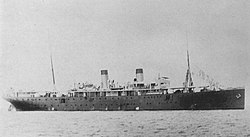| Asian and Pacific theatre | |||||||
|---|---|---|---|---|---|---|---|
| Part of World War I | |||||||
 The German front line at Qingdao | |||||||
| |||||||
| Belligerents | |||||||
Central Asian Rebels | |||||||
| Commanders and leaders | |||||||
During World War I, conflict on the Asian continent and the islands of the Pacific included naval battles, the Allied conquest of German colonial possessions in the Pacific Ocean and China, the anti-Russian Central Asian revolt of 1916 in Russian Turkestan and the Ottoman-supported Kelantan rebellion in British Malaya. The most significant military action was the careful and well-executed Siege of Qingdao in China, but smaller actions were also fought at Bita Paka and Toma in German New Guinea.
Contents
- Allied offensives
- Qingdao
- Pacific
- German naval actions
- Retreat of the German East Asia Squadron
- SMS Emden in the Indian Ocean
- The cruise of SMS Seeadler
- The scuttling of SMS Cormoran at Guam
- Russia
- China
- Siam
- Gallery
- See also
- Notes
- References
- External links
All other German and Austro-Hungarian possessions in Asia and the Pacific fell without bloodshed. Naval warfare was common; all of the colonial powers had naval squadrons stationed in the Indian or Pacific oceans. These fleets operated by supporting the invasions of German-held territories and by destroying the East Asia Squadron of the Imperial German Navy.










